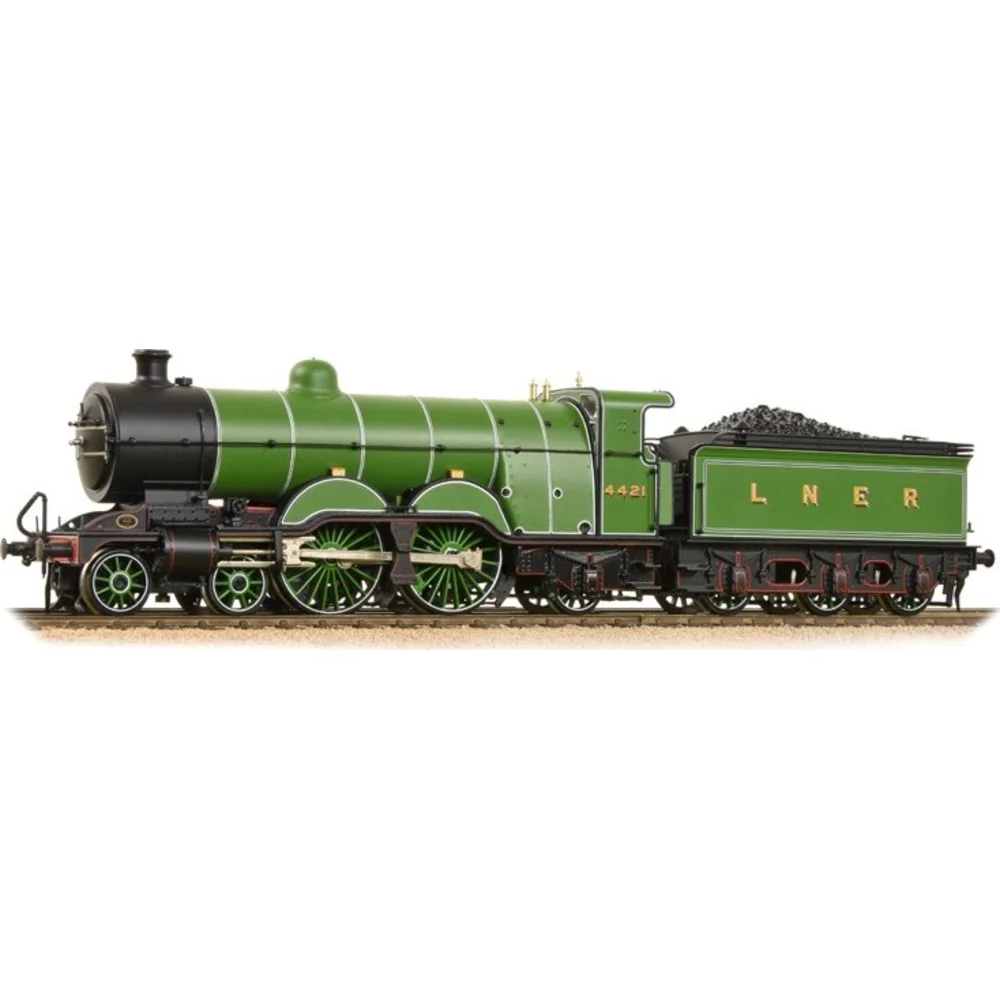Bachmann 31-762
London & North Eastern Railway C1 4421 London & North Eastern Railway Lined Apple Green
Tooling
Announced in 2015 as part of Bachmann’s Branchline range, the Ivatt C1 ‘Large Atlantic’ represented a significant milestone for British outline ready-to-run models. The prototype, designed by Henry Ivatt for the Great Northern Railway in 1902, was a 4-4-2 express passenger locomotive that later became the LNER C1. These engines were pivotal in the development of high-speed East Coast services and influenced subsequent wide-firebox designs. The Bachmann model was initially commissioned as a National Collection model for Locomotion Models before entering the main range in multiple liveries.
Tooling Features
- Scale: OO gauge (1:76) on 16.5mm track.
- Construction: Plastic bodyshell with a die-cast metal chassis for strength and weight distribution.
- Detailing: Highly detailed footplate with gauges, piping, and working firehole door shield; separately fitted vacuum and steam pipes, brake rodding, guard irons, drain cocks, and cosmetic screw-link couplings. Turned metal whistle and safety valves add finesse.
- Couplings: NEM pockets with tension-lock couplers supplied; provision for cosmetic screw-link couplings.
Mechanical & Electrical
- Motor & Drive: 12V DC 3-pole motor driving the rear coupled axle via a gear train (no flywheel).
- Pickups: On driving wheels, trailing truck, and tender axles for reliable current collection.
- Minimum Radius: Second radius (438mm) recommended.
- Weight: Approx. 367g, aiding smooth running and haulage of up to eight Mk1 coaches in tests.
- Lighting: No factory-fitted lighting; cab detail is fully painted.
DCC Capability
- DCC Ready with a 21-pin NEM socket located in the tender. Space provided for a speaker if sound decoder is fitted.
Liveries Produced
- GNR lined green (No. 251 and others)
- LNER apple green with black/white lining
- BR unlined black (weathered variants for NRM exclusives)
These covered eras from pre-grouping through LNER and early BR service.
Reviews & Commentary
The model received widespread acclaim for its accuracy and finish. Reviews praised its smooth running, excellent weight balance, and fine lining, noting the ability to handle tight pointwork without issue. Detail highlights include the backhead and motion, though some reviewers mentioned minor compromises in connecting rod geometry due to OO standards.
Social media and forums echoed these sentiments, calling it “a beauty in all respects” and “amazingly, the first RTR OO Atlantic despite its historical importance.”
Interesting Notes
- Initially exclusive to Locomotion Models as a National Collection model before general release.
- Represents the preserved GNR No. 251, the sole surviving Ivatt Atlantic in the UK National Collection.
- The tooling includes provision for fine-scale detailing parts, making it popular among enthusiasts seeking authenticity.
Class & Prototype
- Class: London & North Eastern Railway C1
- Traction: Steam
- Built: 1902-1910
- Total Built: 94
No prototype found.
Operator & Livery
- Operator: London & North Eastern Railway
- Livery: Lined Apple Green
The London & North Eastern Railway emerged in 1923 as Britain's second-largest railway company, combining seven major railways including the Great Northern, North Eastern, and Great Eastern into a 6,590-mile network stretching from London's four terminals to the Scottish Highlands. Despite serving economically challenged industrial regions, the LNER achieved worldwide recognition for engineering excellence and speed records that remain unbroken today.
Under Chief Mechanical Engineers Sir Nigel Gresley, Edward Thompson, and Arthur Peppercorn, the LNER developed revolutionary locomotive designs characterised by three-cylinder layouts and streamlined aesthetics. Gresley's masterpieces included the A1 Pacifics featuring Flying Scotsman and the legendary A4 class, culminating in Mallard's world steam speed record of 126 mph in 1938.
The company pioneered luxury express services including the Silver Jubilee and Coronation streamliners, whilst investing in forward-thinking electrification schemes and massive marshalling yards. Notable achievements included operating the complete East Coast Main Line, introducing Britain's first regular 400-mile non-stop service, and commissioning Eric Gill's iconic typography that influenced railway design for decades.
Nationalised in 1948, LNER locomotives continued serving British Railways until the 1960s, with some A4 Pacifics working Scottish expresses until 1966. Today, the LNER's engineering legacy thrives through extensive preservation, new-build projects like Tornado, and comprehensive model ranges covering every major class in all popular scales, making LNER subjects essential for discerning railway modellers seeking authentic British steam-age atmosphere.
